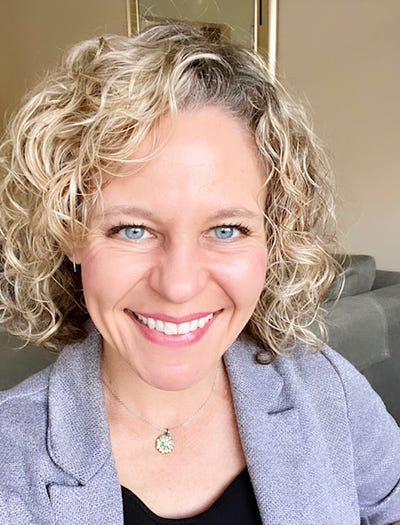Step to It: How (and Why) Zeal Creamery is Using Pedometers on Cows to Signal Product QualityStep to It: How (and Why) Zeal Creamery is Using Pedometers on Cows to Signal Product Quality
With real dairy products competing with a wider range of plant-based alternatives, what gives consumers permission to choose cow's milk? Zeal Grass Milk Creamery wanted a meaningful and memorable indicator of its farming practices and commitment to quality. Enter the step-count challenge for cows.

As terms like "grass-fed" and "pasture-raised" proliferate on protein product labels, Missouri-based Zeal Grass Milk Creamery was looking for a meaningful and memorable way to signal its commitment to ultra-premium quality and stand out in the dairy aisle.
That's where the pedometers came in.
The cows on Zeal's farm near Carthage, Mo., roam and feed freely—there is no barn that houses them all, notes Zeal President Jason Henshaw. They get so much exercise, in fact, Henshaw told Jenn Bane, a Chicago marketing director and longtime comedy writer, that they take as many steps in a day as people are recommended to take.
"One of the first conversations that we ever had with Jason was [about] the fact that not only do they have access to miles and miles of pasture; they walk 10,000 steps a day," said Bane, creative director for M. Harris & Co. "And immediately we were all like, 'Wait, what?' "
And so Zeal's first ad campaign, the Zeal Step Count Challenge, was born. In June, the creamery put bandanas with pedometers attached to them on some of their cows and filmed them wandering Zeal's pastures. The resulting video, complete with color commentary, is posted on Zeal's website. It's a gimmick, sure—but in a grocery environment where health-halo product claims can be vague or confusing to consumers, it's positive proof that Zeal walks the walk, so to speak, when it comes to its dairy farming practices.
Henshaw, whose Zeal Grass Milk Creamery dairy products are available in more than 200 grocery stores in Missouri, Illinois, Wisconsin, Texas and New York, talked with Winsight Grocery Business about what consumers want in dairy today and what gives them "permission" to purchase real dairy as shelves grow more crowded with nondairy alternatives.
Christine LaFave Grace: Why is something like how many steps a cow takes in a day a meaningful marker of quality from a dairy farm? What does "better for you" look like within dairy right now?
Jason Henshaw: It’s a good question. Consumers, from my perspective, are getting smarter at understanding what the labels actually mean. And it’s been amplified with COVID. I think it’s a positive that we’re just focusing on that the products we use are better for me, better for our family. And in particular, with dairy, we know factually that cows that are outside roaming on pasture and only eating grass, the products are better for us.
If a doctor tells us to walk 10,000 steps and eat more fresh greens, that’s good for us, right? And we know that healthy soil, healthy grass, healthy cows—that then turns into the ultra-premium dairy that is good for us. All of us had milk as the first source of food.
See also: Milk, for All It's Worth: Dairy Plays to Its Strengths
The FAQ page on Zeal's website goes through a wide range of questions—everything from "What is free-range?" to the difference between A1 and A2 proteins to farming practices and why Zeal milk isn't as bright white as nonpasture brands. There's a lot to Zeal's story and a lot you want to tell—what's ultimately most important to capturing consumers' attention in store or online?
We did spend a lot of time around making sure that the key attributes were front and center on the label. Even the choice we made with that bottle of milk—it’s a clear plastic bottle. We’re not hiding anything. You see the product. Then we made sure on the front we had “single-farm” and “non-GMO”—those are the key attributes for free-range for dairy that we know. Consumers are really getting smarter about choosing free-range. We align it to the transformation that the egg industry did. There are some big farms that have cows in barns for their whole life. We’re really proud of our New Zealand heritage and having our cows roam outside every day. There’s actually no barn for them to go into—which is a positive; they’re herd animals.
When we’re looking at not just markers of animal welfare but also sustainability of farmland itself, how have you seen consumer interest in topics such as regenerative farming evolve?
I think it’s finally starting to get some good traction now where consumers are more aware of regenerative agriculture and the impact of heavy tilling on soil vs. having a pastural system that is 100% regenerative. Our cows will be on a paddock today and they’ll eat the grass down to about 2.5 inches, and then the next day they’ll move to the next lush paddock and do the same thing. It’s rotational grazing and making sure that the animals are part of the full ecosystem—“keeping the poop in the loop”—for the earth to prosper.
With nearly 2 in 5 U.S. households buying plant-based dairy alternatives last year, what is the challenge and opportunity you see for traditional dairy against a backdrop of rising interest in plant-based?
I think it comes back to, we’re all looking for products that are better for you. With plant-based, definitely for some consumers, if they can get a really good healthy protein source from [plant-based], then that’s a good product for them to choose. But we are saying, and what we are seeing, is that even though homes are trying plant-based alternatives, there’s still dairy in the fridge. And so what we’re trying to do is make sure that consumers are aware that healthy dairy that is from the best farming system, where it is ethical and sustainable and regenerative, it does really 100% give you the best-quality dairy. Milk and dairy are an amazing source of all of those nutrients that are good for us.
Given the varied challenges and rising costs in the market right now, what are the biggest headwinds Zeal is facing? What are your top priorities?
I think there’s a massive challenge with the labor shortage, which I’m seeing directly impacting freight. Freight rates, and there’s not a lot of drivers driving trucks around the U.S.—that’s a definite impact to us. From a consumer perspective, I think we all have to really work hard and get the consumer awareness that there are products that are genuinely better for you, and these are in Americans’ backyards. So it's bringing the truth of homegrown American farming, which is seriously the best in the world.
About the Author
You May Also Like






